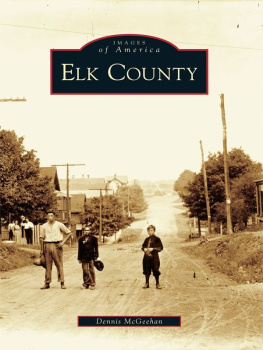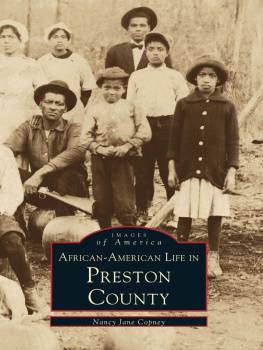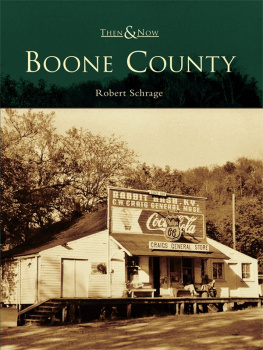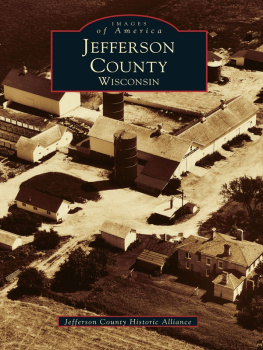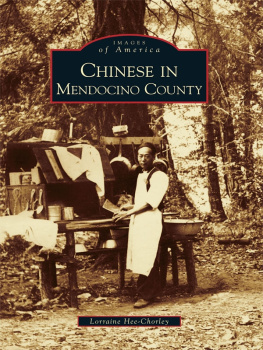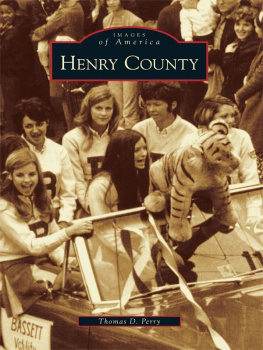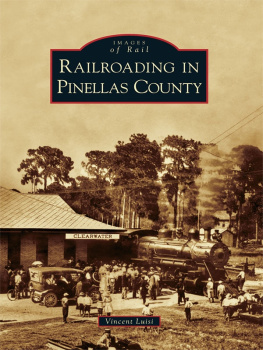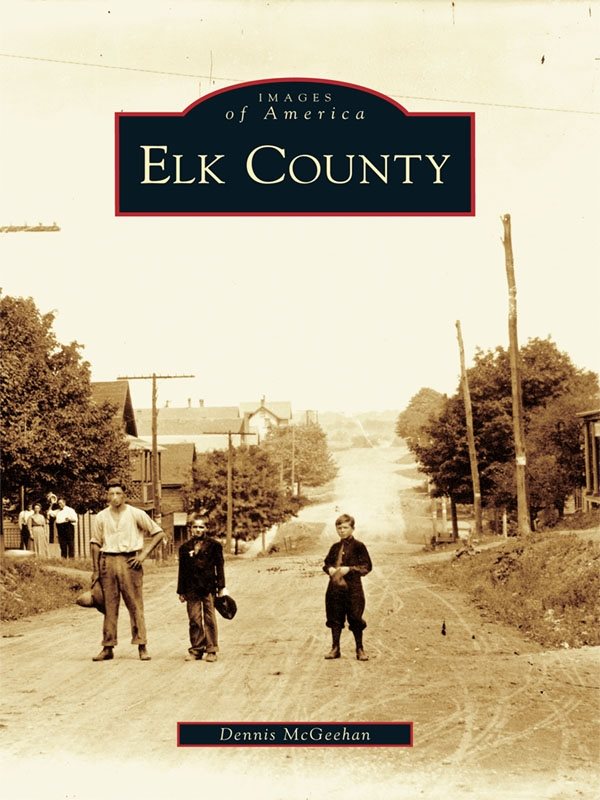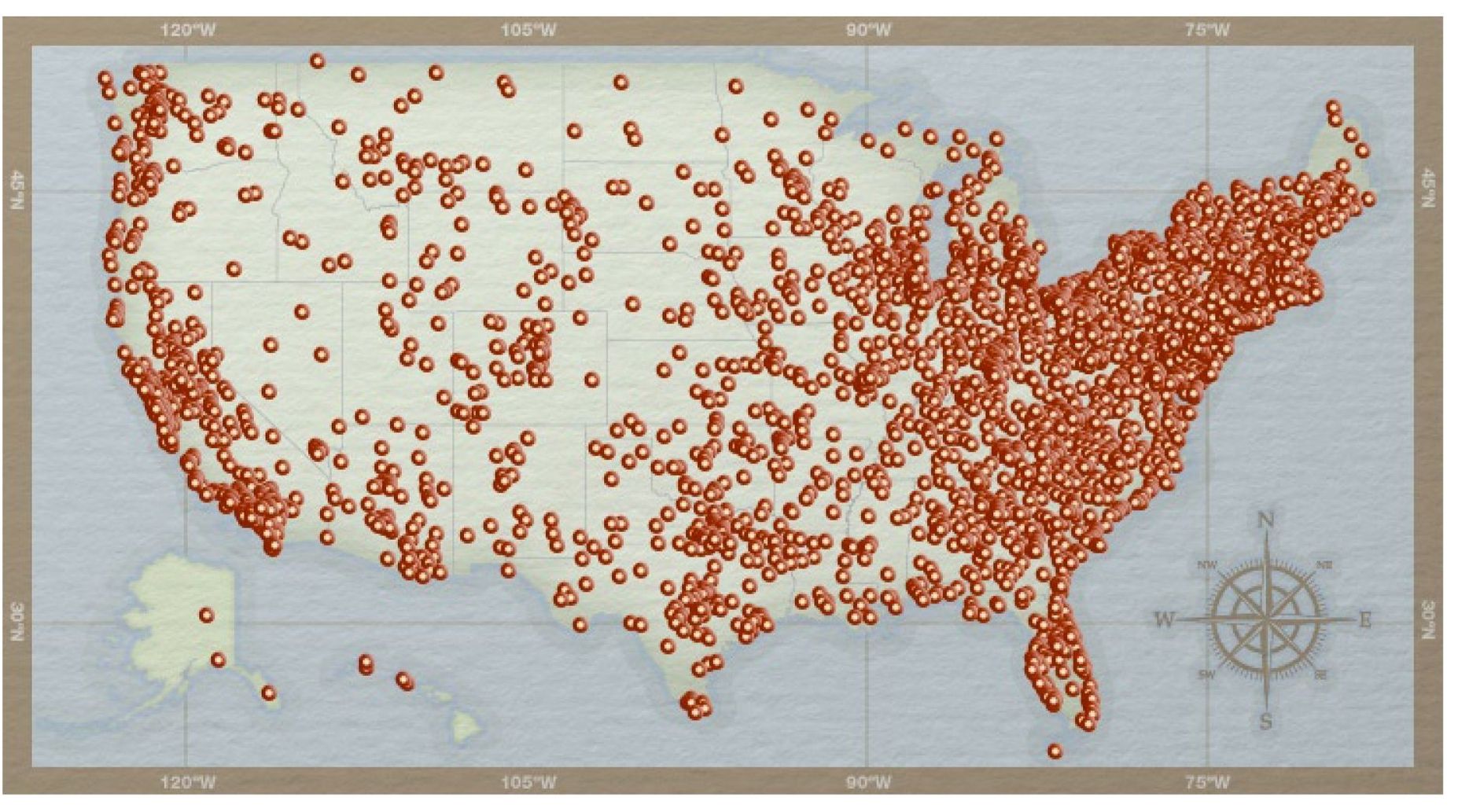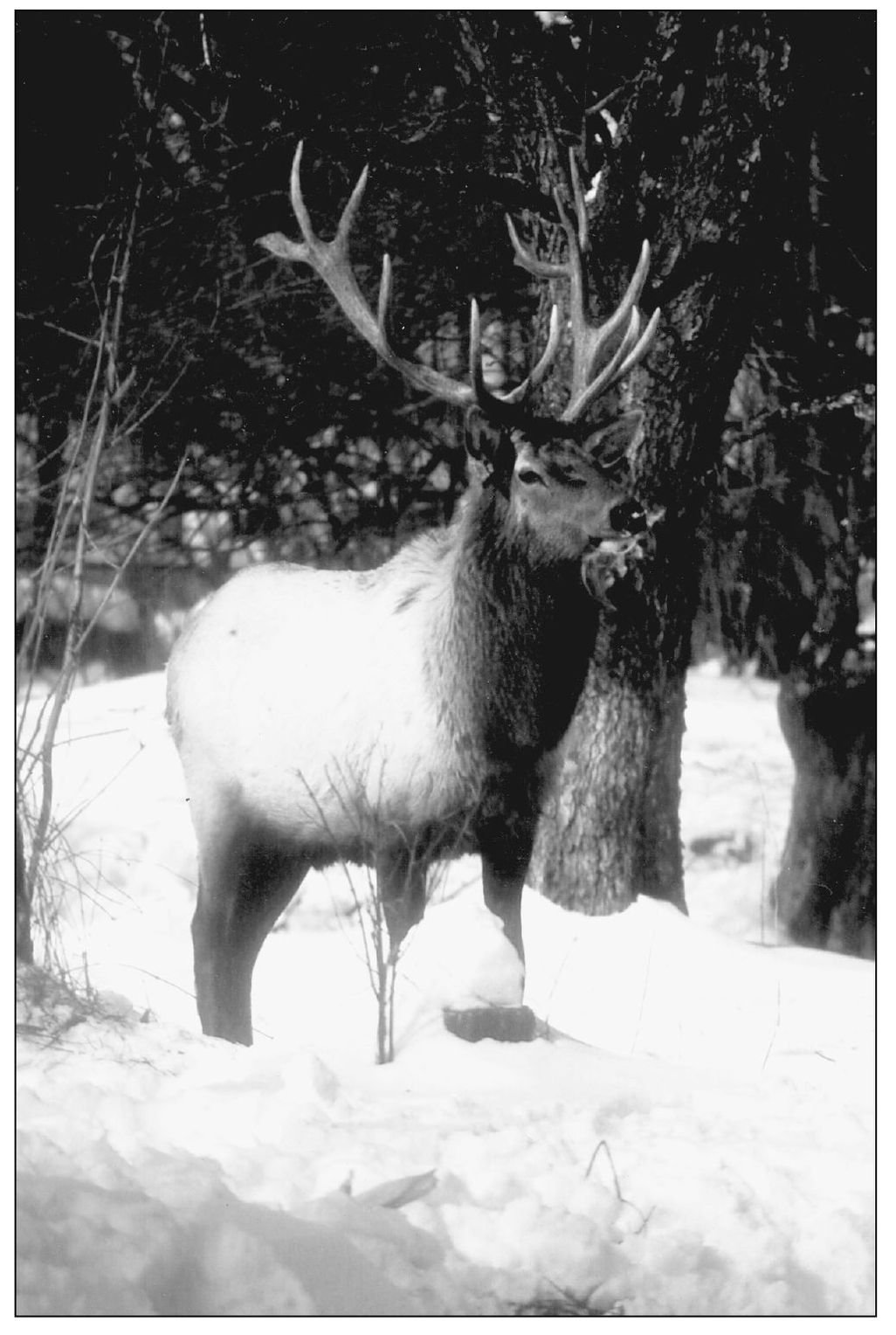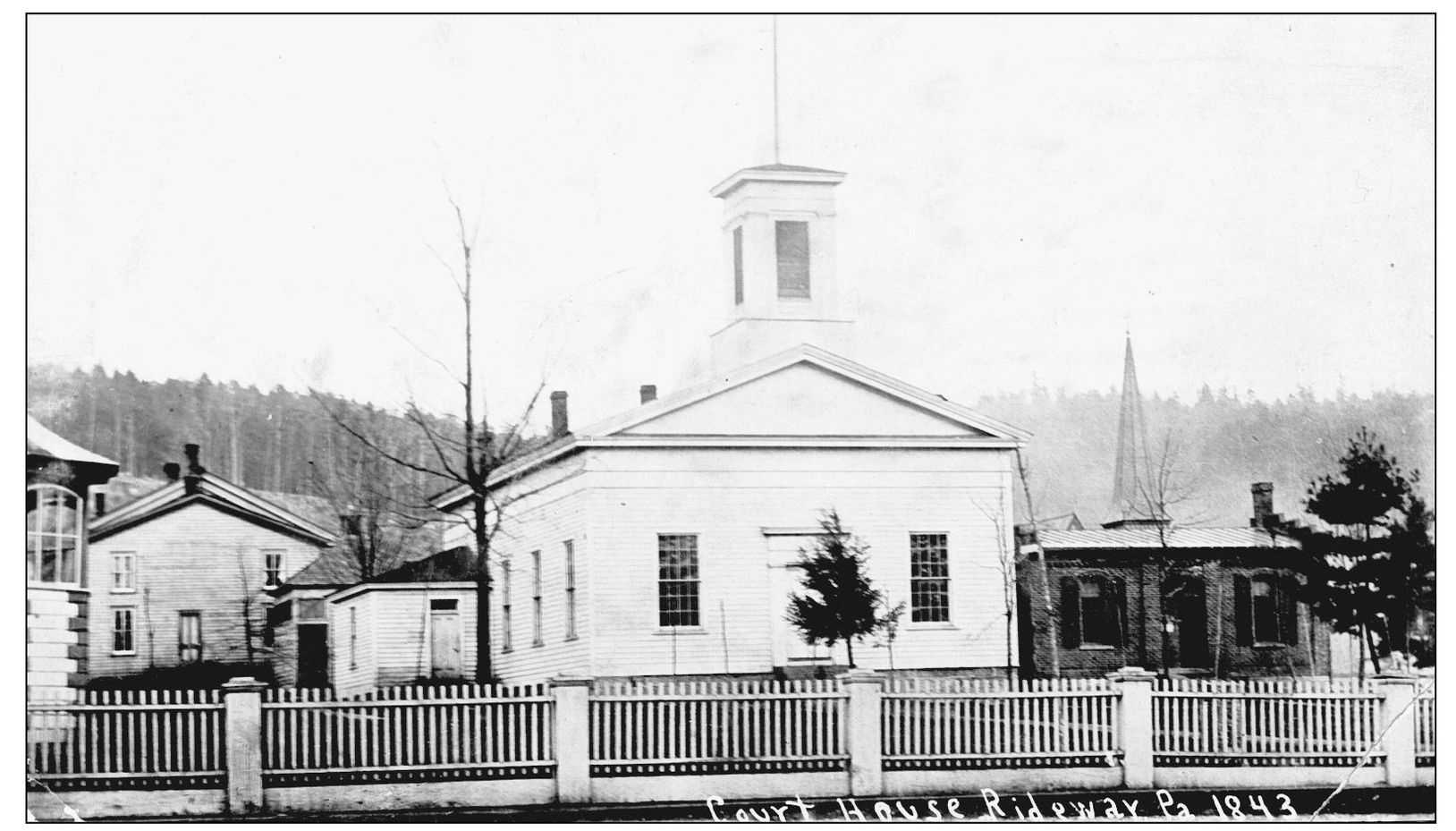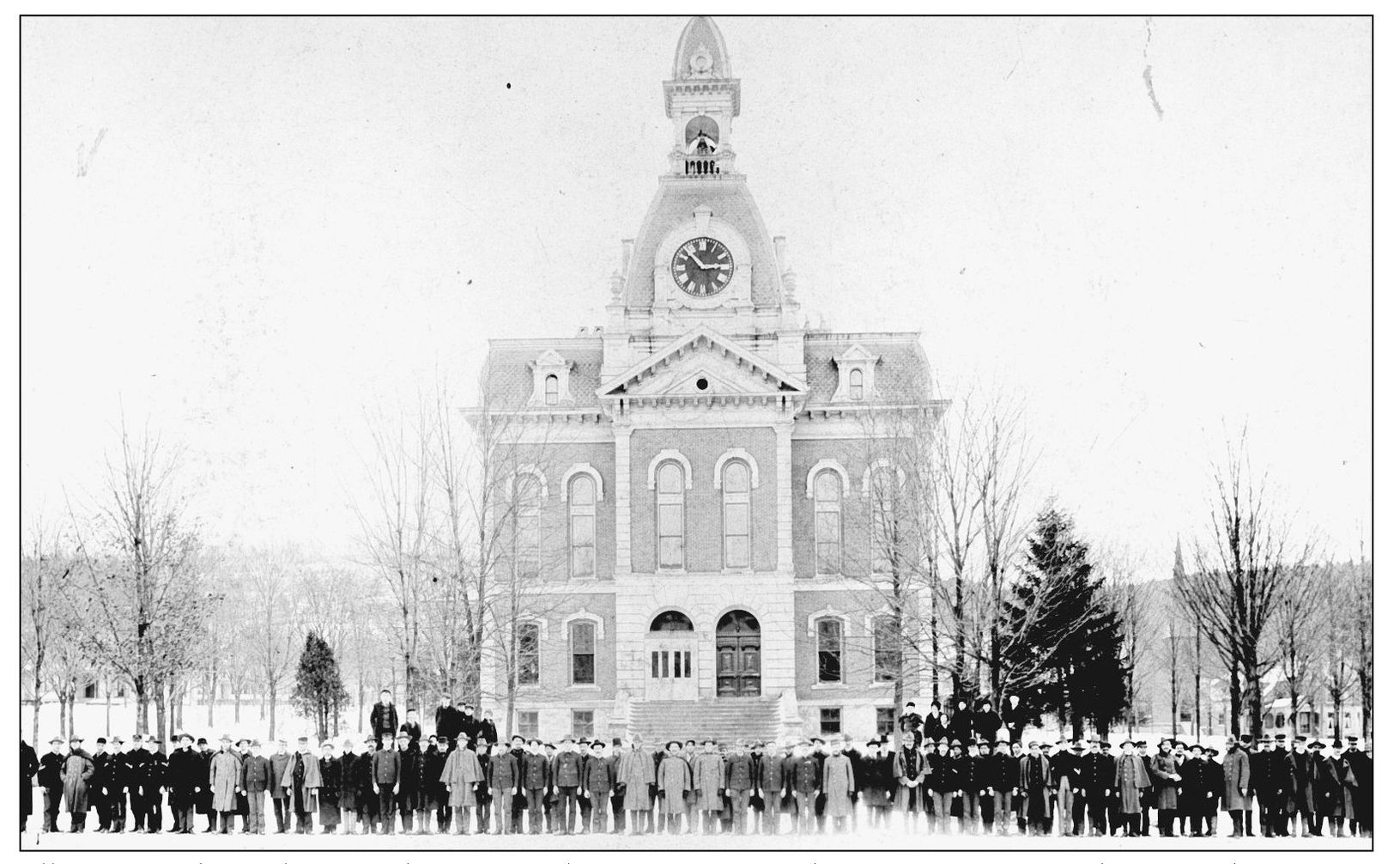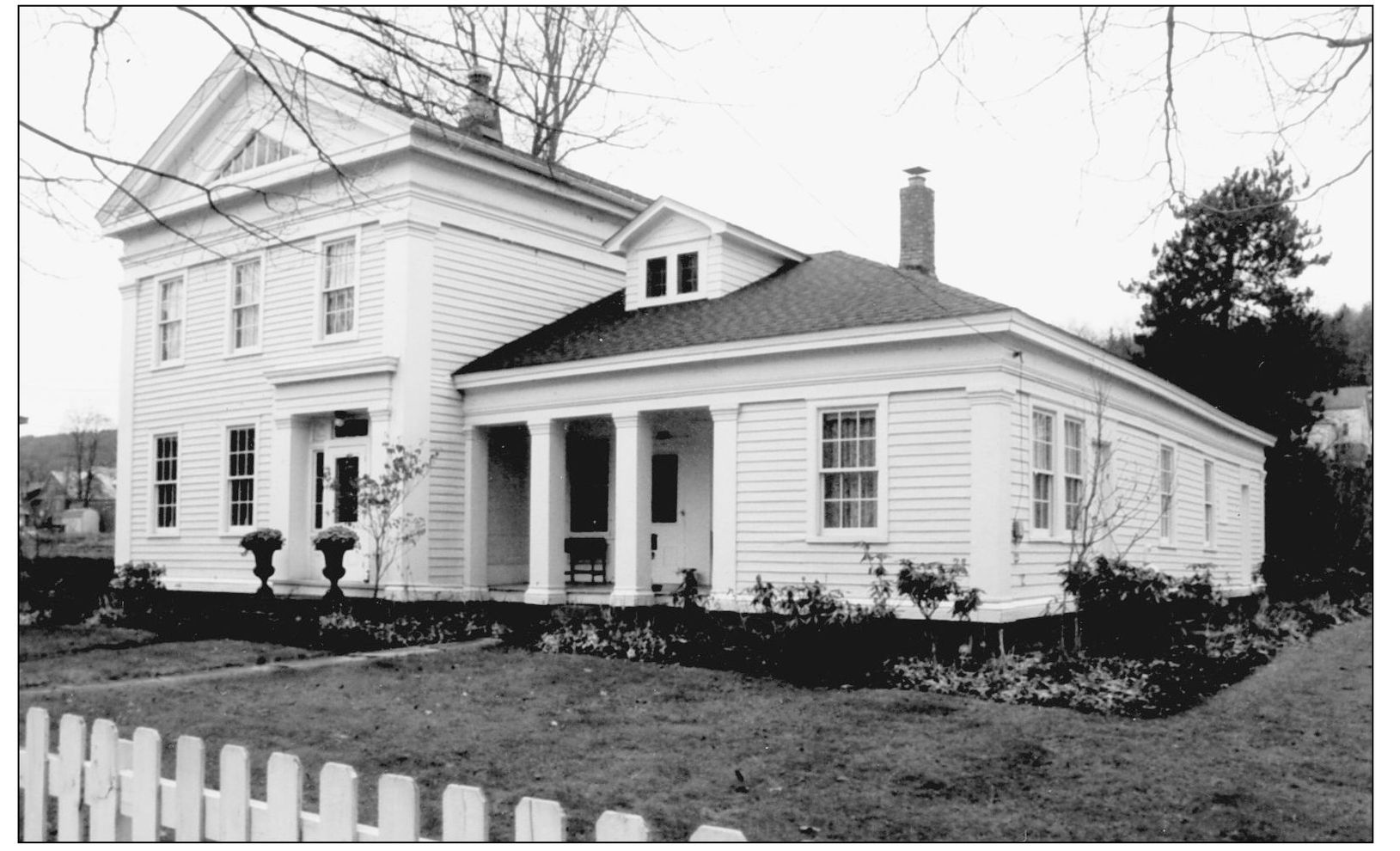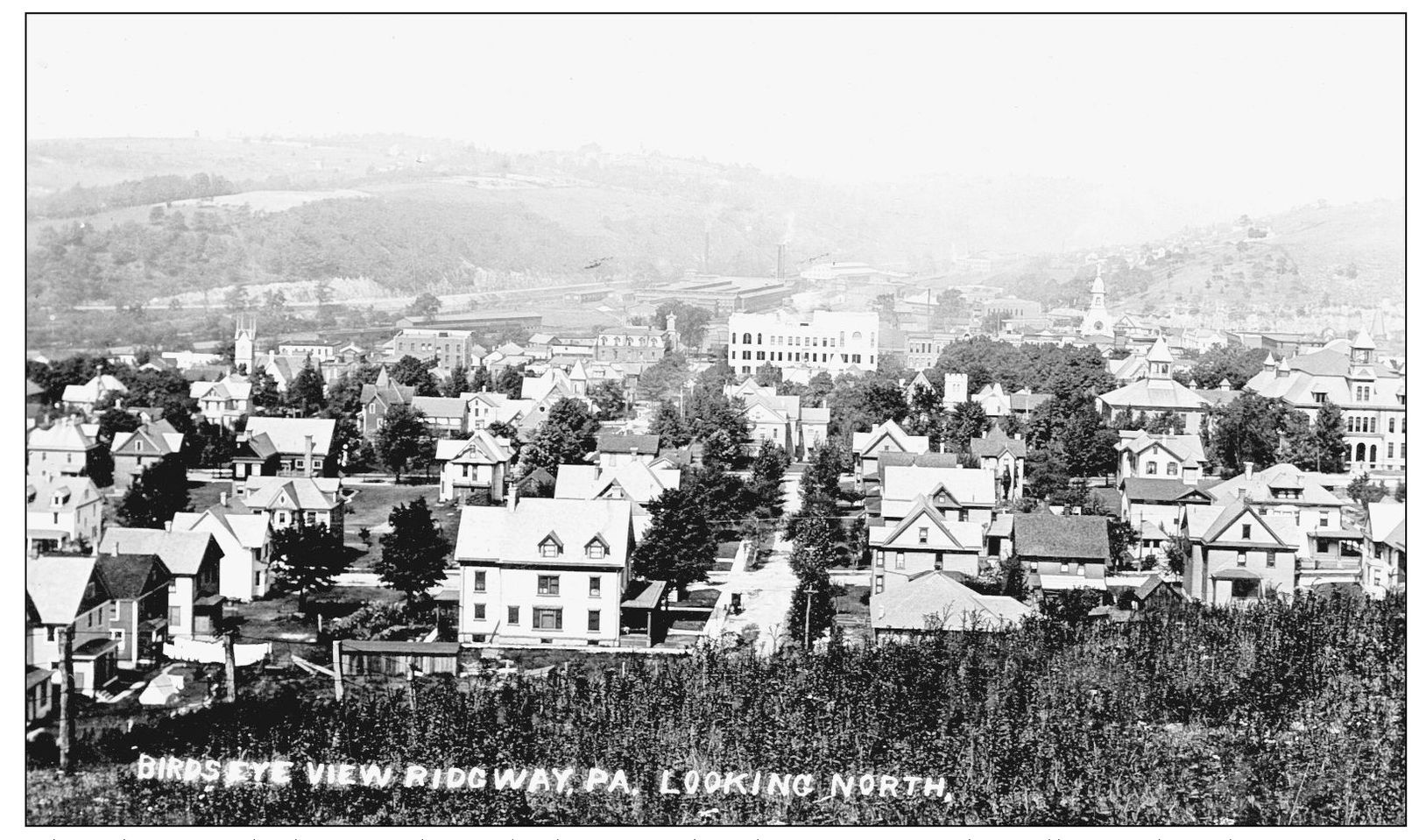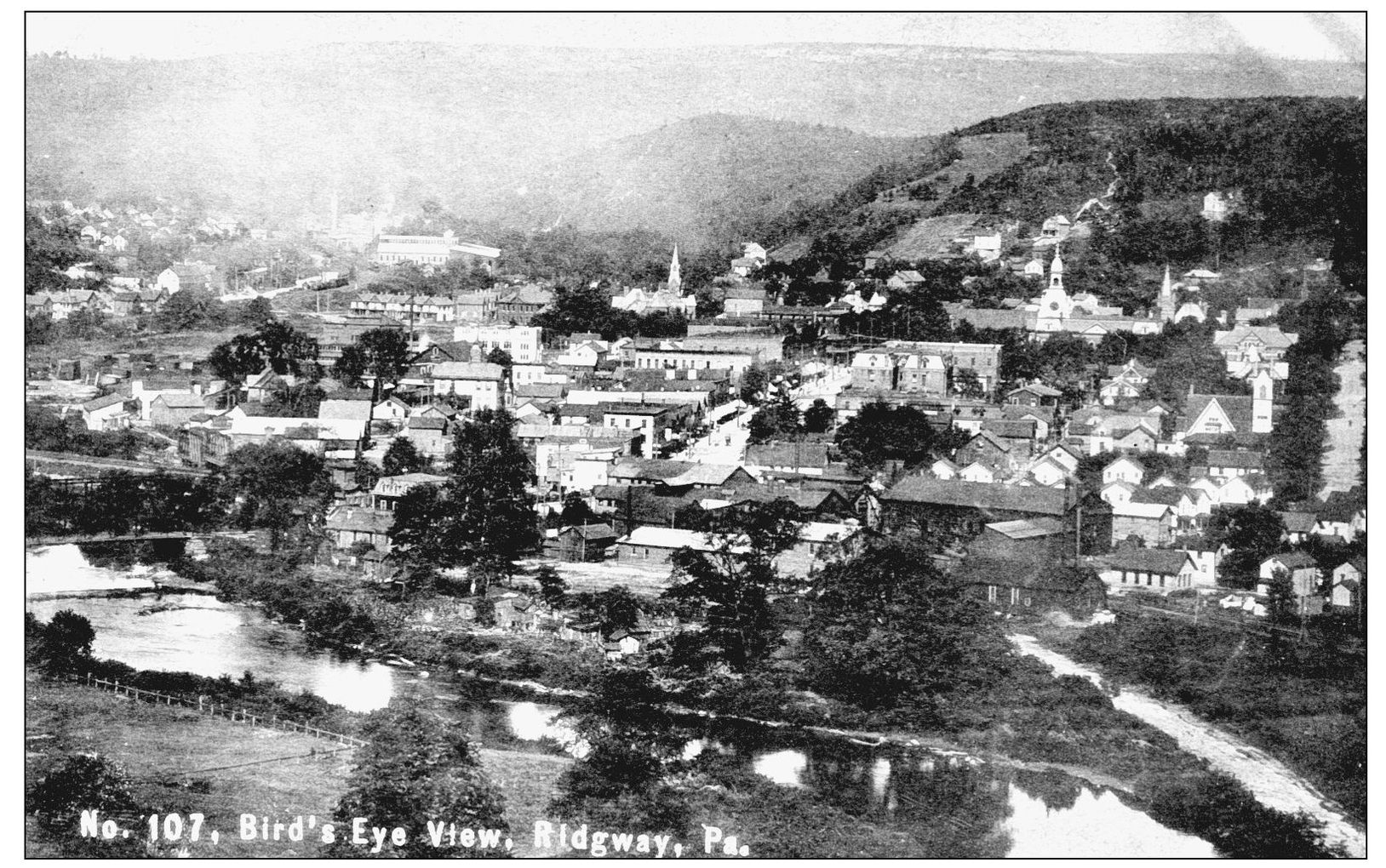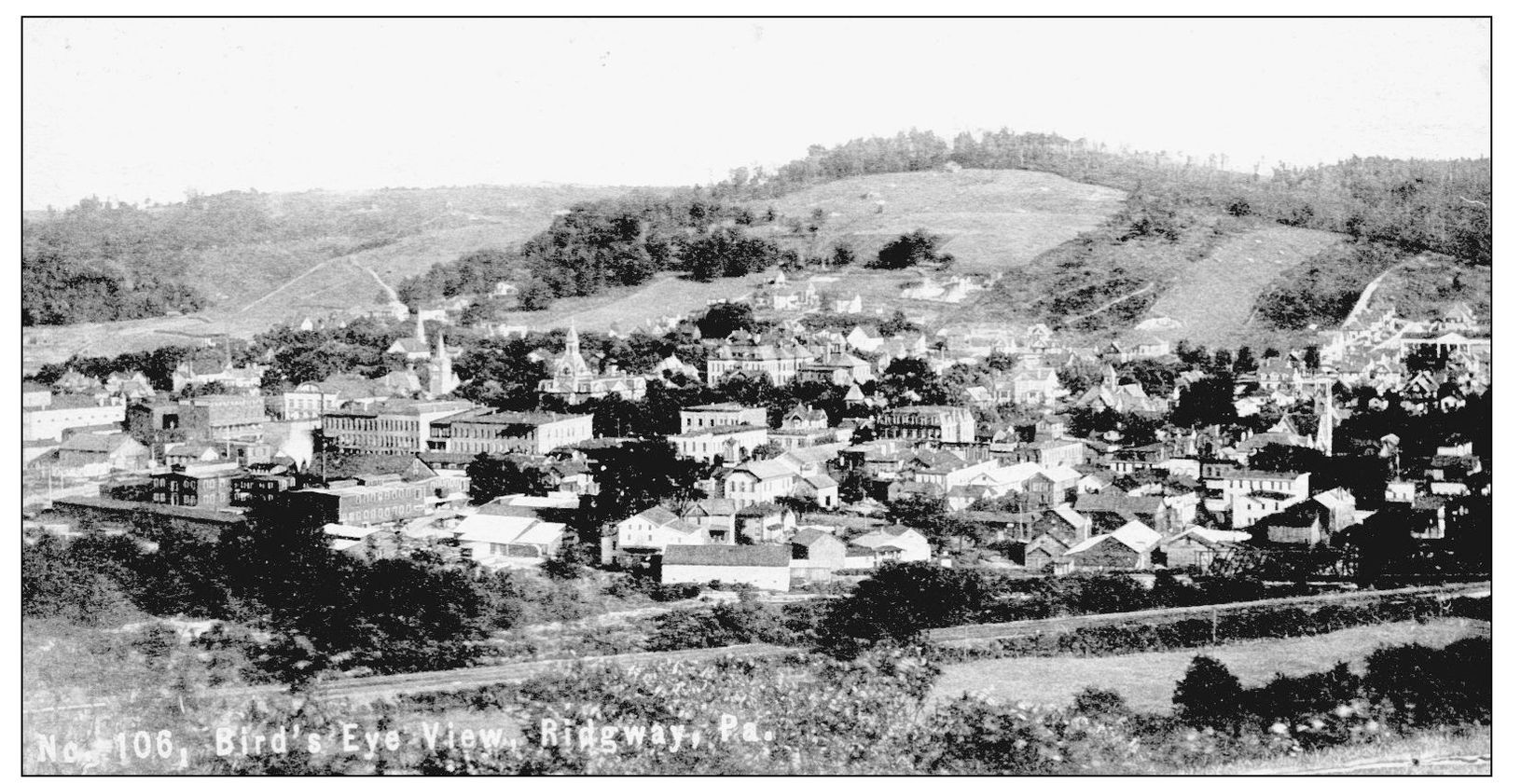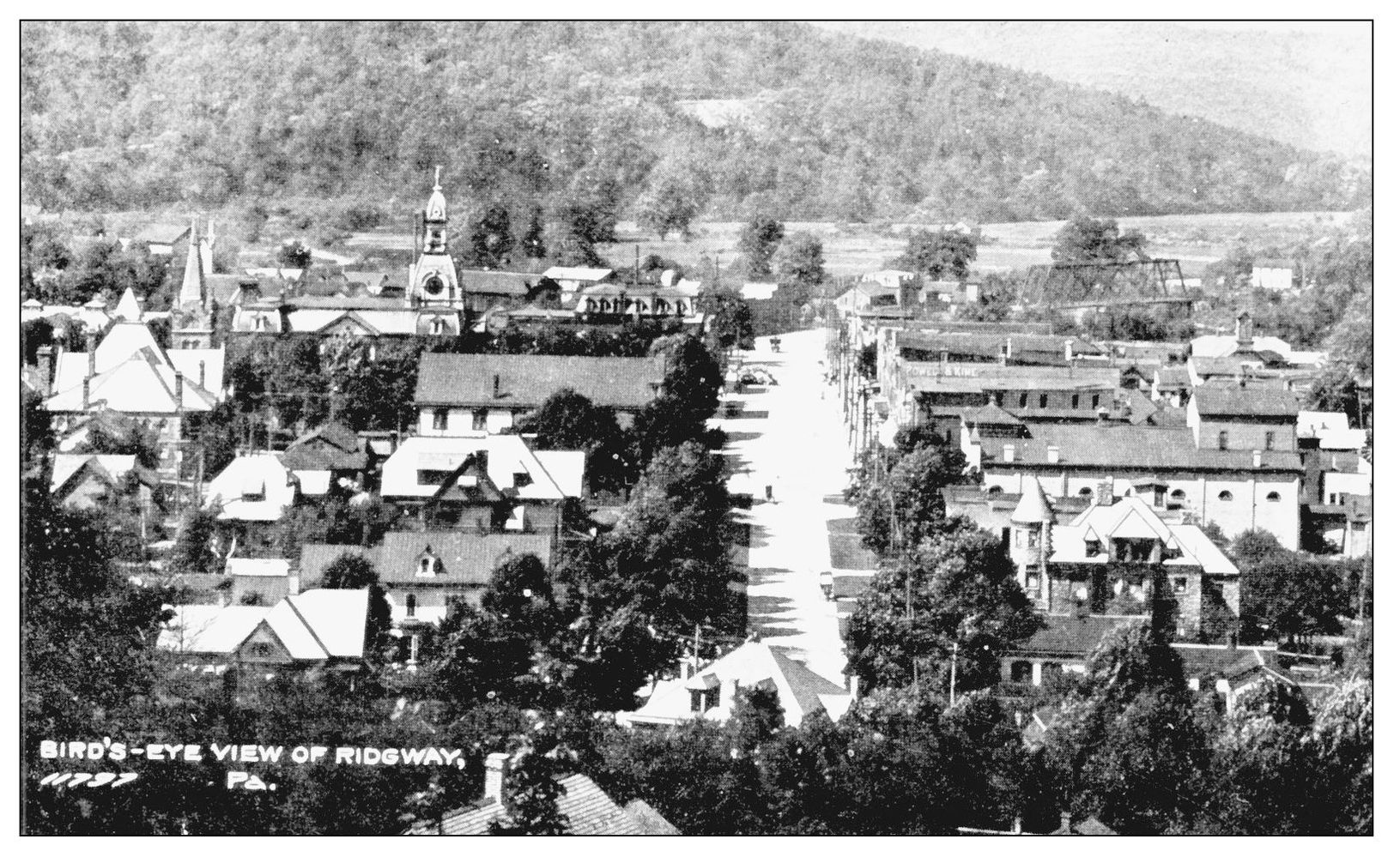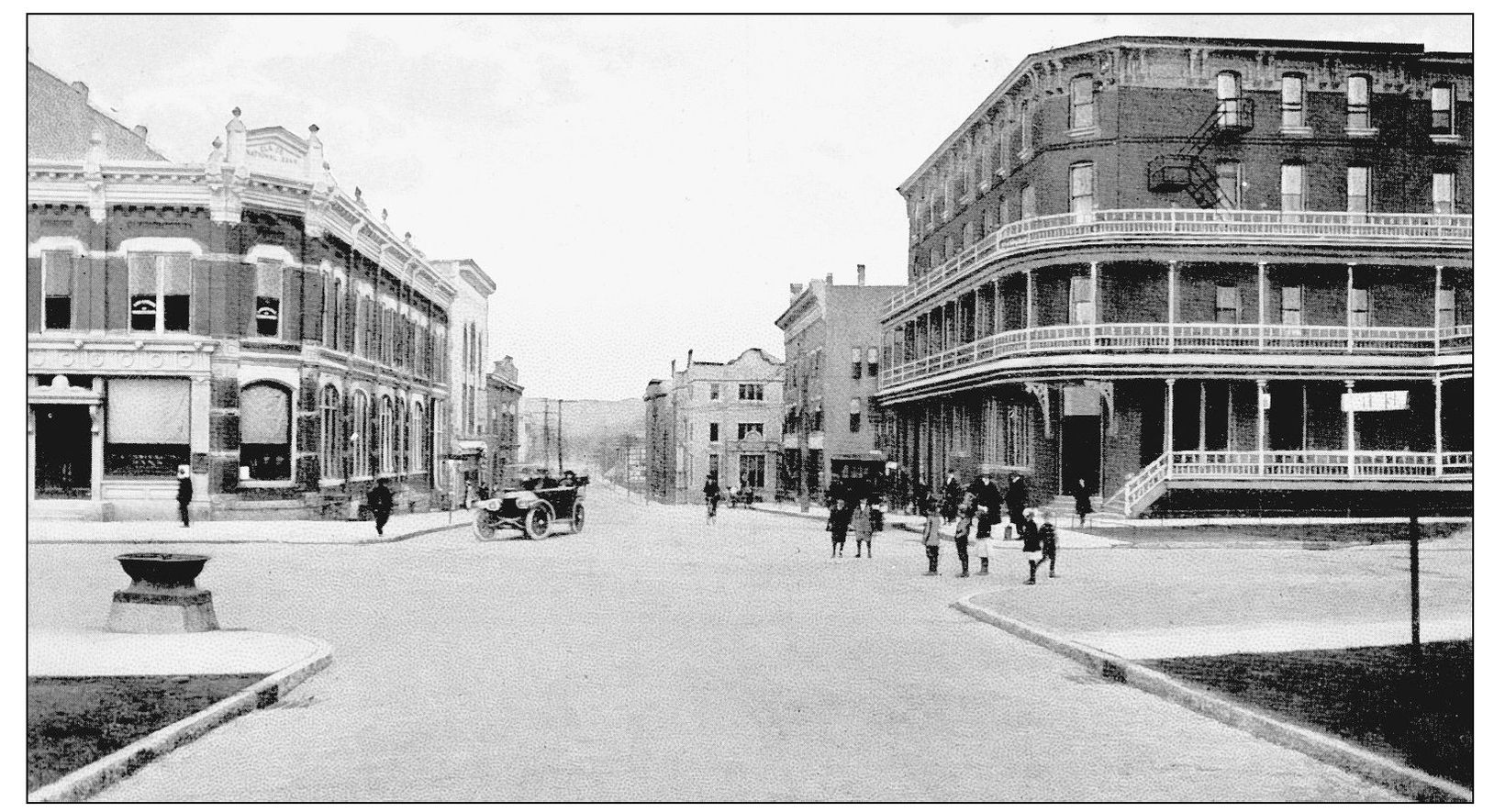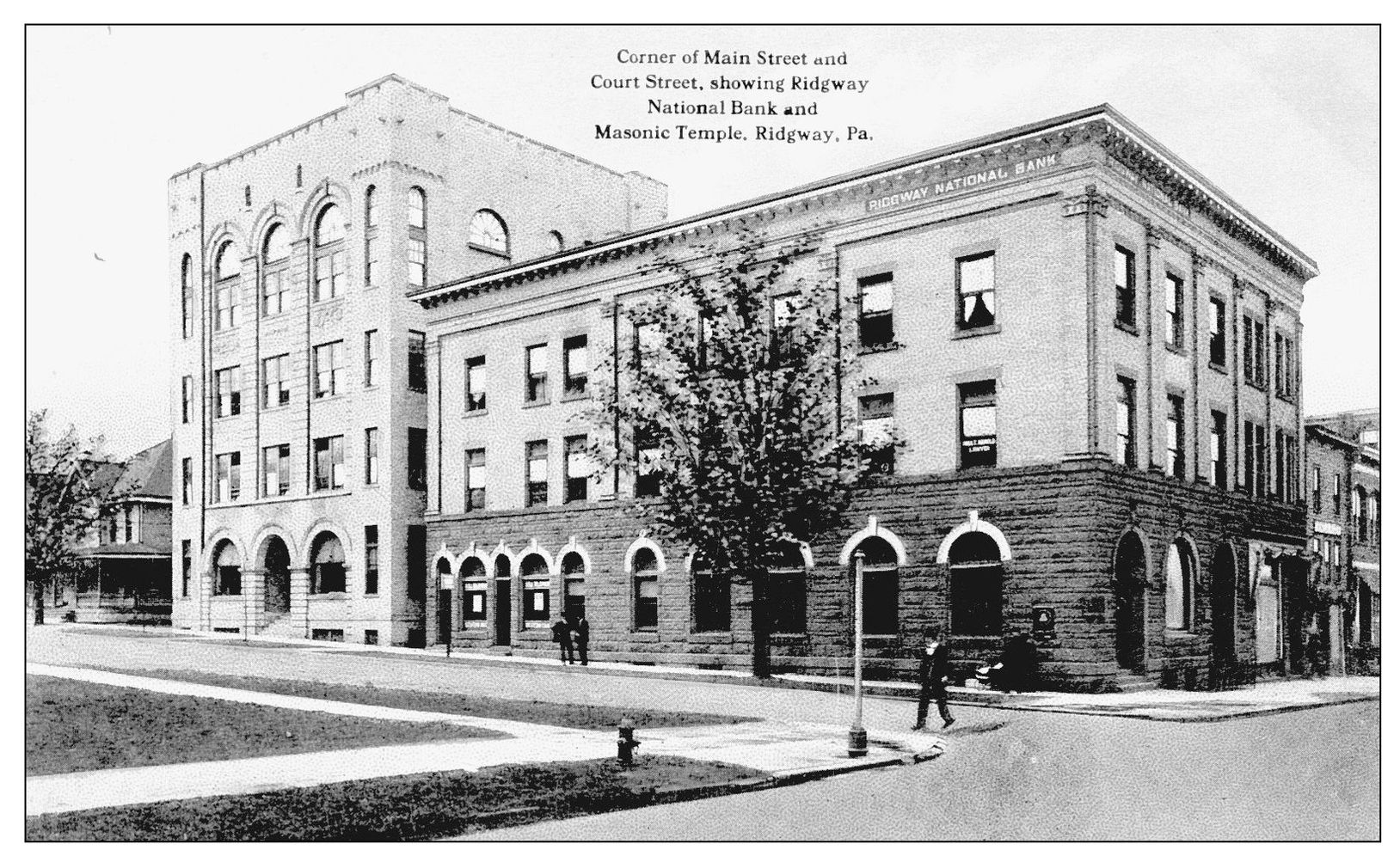Search for your hometown history, your old stomping grounds, and even your favorite sports team.
One
TOWN AND VILLAGE
The majestic elk is the namesake and symbol of Elk County. After the original herd was all killed off, elk from the Rocky Mountains were reintroduced into Pennsylvania in 1913. For a time the herd dwindled to a precious few, but today the elk herd is thriving, and a limited hunt now brings much tourist revenue into the area. (Dennis McGeehan Wildlife Photography.)
The first Elk County Courthouse in Ridgway was built in 1845 of wood frame construction by Edward H. Derby. He had also built the Clarion County Courthouse. The building served as a courthouse for 34 years before being condemned. In 1879, a new courthouse was built of red brick and dressed local sandstone. The architect and builder was J. P. Marston, who had recently completed the Warren County Courthouse. (Dave Woods.)
The present Elk County Courthouse has three stories with a mansard roof surmounted by an elegant, slate-covered tower. The tower included a nine-foot diameter clock, a 1,000-pound steel bell, and a nine-and-a-half-foot zinc statue of the Goddess of Justice that was struck by lightning and removed. The courthouse is approached by a grand staircase. Today the grounds are accented with lampposts, cannons, and stately trees.
Elk County has a long tradition of military service to the nation. Memorial Day and Veterans Day services are always well attended. One Revolutionary War veteran is buried in Elk County. The famous Bucktail Regiment included a company of Elk County Rifles. In this photograph, Company H veterans of the Spanish-American War pose at a reunion in front of the courthouse.
The George Dickinson House on West Main Street is the oldest residence in Ridgway Borough. George Dickinson came to Ridgway from New York State in 1832. He erected a water-powered sawmill and developed the area of west Ridgway. He also built a store in west Ridgway and was involved in many other businesses. (Dennis McGeehan.)
This photograph shows Ridgway looking north. The view is up the valley of the Clarion River. The industrial section of Ridgway is apparent in the smokestacks along the river at the top. The Elk County Courthouse tower is visible at right center, and the old public school buildings are at middle left. The large white building in the center is the Masonic temple. (Mark Wendel.)
Ridgway is shown looking east. The Clarion River is visible at the bottom of the scene. The Elk County Courthouse is in the middle right with Main Street in front of it. The valley of the Clarion River flows toward the top left of the view on to Johnsonburg, and the Elk Creek valley, top right, continues on to St. Marys. (Dave Woods.)
Here is a view of Ridgway looking south. The Elk County Courthouse is just left of center with the Trinity United Methodist Church to the left of the courthouse. The Clarion River is in the foreground. The Elk County General Hospital is on the right edge of the photograph. Note the cleared area on the hill above the town, which is forested today. (Mark Wendel.)
This photograph shows Ridgway looking west. The view is looking down Main Street. The end of Main Street curves to the right, and the bridge over the Clarion River is visible. In the left center of the photograph, the tower of the Elk County Courthouse can be seen. To the left of the courthouse, the Trinity United Methodist Church steeple rises.
This is the intersection of Broad and Main Streets in Ridgway. On the right is the Hyde Hotel, built in 1858 by Joseph Smith Hyde. In 1890, an addition, much larger than the original, was added. The original section burned in 1891. The hotel was demolished in 1965. National City Bank now occupies the site. The building on the left was formerly the Elk County National Bank. (Mark Wendel.)
In 1903, the Ridgway National Bank moved into its new building at the corner of Main and Court Streets, across from the Elk County Courthouse. The building was constructed by M. V. Van Etten of Warren, who also built the Elk County Jail. In 1967, the bank moved into new quarters at the corner of Court and Center Streets. The building on the left here is the Masonic temple. (Mark Wendel.)

